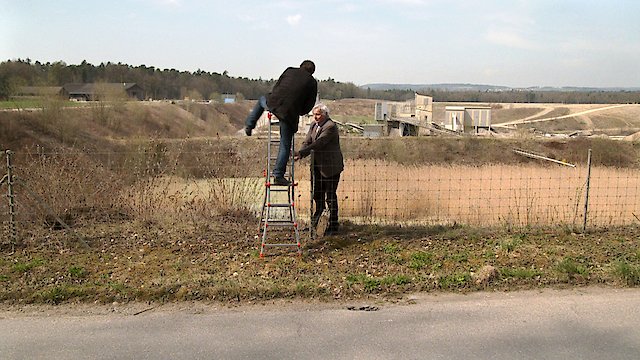
Journey to the Safest Place on Earth
Where to Watch Journey to the Safest Place on Earth

Journey to the Safest Place on Earth is an intriguing, thought-provoking documentary that seeks to address a worldwide, concerning conundrum: what to do with the over 350,000 tons of high radioactive nuclear waste spread all across the world. This 2013 film is directed by Edgar Hagen, a Swiss director known for his investigative, eye-opening documentaries.
The movie takes on a riveting journey led by the Swiss nuclear physicist Charles McCombie and his accomplice, Marcos Buser, a scientist-consultant who specializes in underground waste disposal. Along with Gregg Butler, a uranium specialist with valuable insights on nuclear power and waste disposal, this group of distinguished experts strives to provide enlightenment on this global problem and offer potential solutions.
The crux of the movie focuses on the quest to find a safe final repository for the long-term, 1-million-year disposal of atomic waste. Charles McCombie takes it upon himself to traverse across multiple nations, sit down with experts, analysts, and scientists to bring forth the cold truth on nuclear waste's calamitous effects. Serving as the main protagonist, McCombie's thought process, expertise, and attempts to find a solution are the driving force within the film's narrative.
Hagen doggedly follows McCombie's endeavors to penetrate the literal and metaphoric depths of governments' subterranean repositories for nuclear waste, inviting viewers to grasp the profound implications and enormity of the critical worldwide issue. The project's gravity is heightened by captivating visuals and poignant representations of potentially catastrophic impacts, effectively striking the chord on the discourse of nuclear waste.
Throughout his journey, McCombie explores various locations that have been proposed or considered as potential disposal sites, including the United States, Japan, Canada, Australia, Finland and Sweden, and his native Switzerland. Each site introduces different complexities, expert opinions, and logistical problems. Together, they string the narrative of the scientific, political, and societal challenge that the world is still struggling to grasp fully.
Marcos Buser, in his role, further emphasizes the expertise amidst this puzzle-like global scenario. He probes each situation, studying the ground layers, questioning the location feasibility, and bringing forward an impenetrable layer of discussion around safety and security.
At the same time, Hagen expertly leverages Gregg Butler's immense knowledge on uranium and his experience in dealing with the element in its raw and reactive states. Butler shares unseen perspectives on the radioactive nature of nuclear waste, bolstering McCombie's plea by paranormally implying the ticking clock against humanity.
Hagen's fascination with this relatively undiscussed global issue forms the enduring backdrop of the film, and his expertise in the documentary genre is on vibrant display. His strength lies in his ability to manage several intertwined storylines, all piecing together to reveal a larger landscape of a fine balance teetering on the edge of global disaster.
The aesthetics and the layout of the movie, too, are noteworthy. From desolate landscapes to high-security confines, from experts' roundtables to the common man's homes, each frame has a purpose and a message that manages to grip the audience and stimulate thought. The movie patently blooms with a careful amalgam of scientific insights, political repercussions, socio-economic costs, and human lives stirring under the menace of high-level radioactive waste.
Throughout the entirety of the film, the narrative never veers away from the ultimate, very human question: What is our responsibility to future generations? The looming question of "how do we leave the planet for future inhabitants?" is haunting yet essential, and resonates with those who are concerned with the legacy they will leave behind.
Journey to the Safest Place on Earth is a stimulating, sobering, and sometime unsettling documentary that throws light on our atomic heritage's nature and global challenges. It uncovers the complex realities of nuclear waste disposal, ultimately asking viewers to contemplate the profound implications of disposing of our civilizations' high-level radioactive waste.
In essence, the film is more than a journey into the physical landscapes of nuclear waste. It forces us to deeply reflect on the moral landscapes arising from choices made years ago, to face them head-on in our present, and to seek solutions for a safer future. This documentary stands out as an essential piece in the discourse on global environmental and humanitarian issues, serving as a wake-up call to nations and individuals alike.
Journey to the Safest Place on Earth is a Documentary movie released in 2013. It has a runtime of 100 min. Critics and viewers have rated it moderate reviews, with an IMDb score of 6.6..
How to Watch Journey to the Safest Place on Earth
Where can I stream Journey to the Safest Place on Earth movie online? Journey to the Safest Place on Earth is available to watch and stream, buy on demand, download at Google Play, YouTube VOD. Some platforms allow you to rent Journey to the Safest Place on Earth for a limited time or purchase the movie for downloading.




















